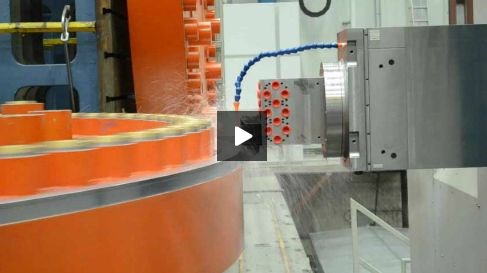Video: Horizontal Boring Mill Turns 23-Foot-Diameter Part
This shop leverages large-scale multitasking machines. Learn why, and see one of its horizontal boring mills turning a terribly big mining industry part.
Share





Arguably, equipment that can perform both milling and turning is more valuable to shops that machine large workpieces than those churning out smaller ones. There are a number of reasons why multitasking is particularly valuable for the type of work Magna Machine performs. The most notable is reduced handling of bulky parts on the shop floor that no longer need to be transferred to multiple machines. Setups are often easier, too, because parts can be oriented in such a way that gravity is more a friend than a foe. (This also means fixturing is more robust to withstand heavier cuts.) Finally, delivery times to customers can be greatly shortened. Setups for large forgings, castings and weldments can take an entire shift or more compared to just a couple hours for more conventional workpieces.
Magna Machine has three big multitasking machines in what it calls its “super bay.” One is a Union horizontal boring mill that can also turn parts thanks to the addition of a Bost rotary table installed at one end of the machine’s X-axis travel. See it in action in the video above, and read this story to learn more about the shop’s move to massive multitasking.

Related Content
-
Inverting Turning and Five-Axis Milling at Famar
Automation is only the tip of the iceberg for Famar, which also provides multitasking options for its vertical lathes and horizontal five-axis machine tools.
-
Swiss-Type Control Uses CNC Data to Improve Efficiency
Advanced controls for Swiss-type CNC lathes uses machine data to prevent tool collisions, saving setup time and scrap costs.
-
5 Tips for Running a Profitable Aerospace Shop
Aerospace machining is a demanding and competitive sector of manufacturing, but this shop demonstrates five ways to find aerospace success.


















.png;maxWidth=300;quality=90)


